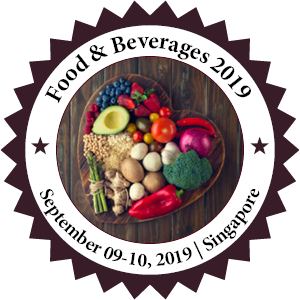Kunjal Shrestha
Central Department of Food Technology, Tribhuvan University, Dharan, Nepal
Title: Blanching and Processing Effect on Functional Properties of Lizard Plant (Houttuynia cordata Thunb.)
Biography
Biography: Kunjal Shrestha
Abstract
The present study is an attempt to put an insight into a medicinal plant Houttuynia cordata Thunb., which is indigenous to North-East India and China. The plant is used as a medicinal salad for lowering blood sugar level in parts of North-Eastern parts of India. The study provides detail information about the chemical composition and functional properties (total chlorophyll, total polyphenols, total flavonoids, antioxidant activity and anti-glycation activity) of plant before and after processing (dehydration and pressure cooking). The plant parts were subjected to blanching for 2 minutes and its effect on functional properties were determined. As different parts of the lizard plant were processed (drying and pressure cooking) and its effect on functional properties determinded. The total chlorophyll (2.61 mg/g db), total polyphenols (30.72 mg GAE/g db) and total flavonoids (12.91 mg/g db) content of fresh gande in 80% acetone extract and 80% ethanol extract determined spectrophotometrically lowered significantly (p<0.05) after blanching. The dehydrated leaves showed highest retention in chlorophyll content followed byalkaline blanched samples. The effect of processing on antioxidant and anti-glycation activity of plant extract was compared with fresh plant parts extract. DPPH radical scavenging activity or IC50 value of fresh leaves extract was 285.69 µg/ml, followed by rhizomes (309 µg/ml) and stem (367.87 µg/ml). Similarly, the fluorescence value of glycated material showed highest inhibition to glycation by fresh leaves extract (93.82%). Processing conditions significantly (p<0.05) decreased the activity i.e. higher concentration was required for 50% inhibition and lower inhibition for glycation. The study showed that total polyphenol and the flavonoid content of HC were the highest in controlled sample. The results imply that these plants are potential sources of natural antioxidants which have free radical scavenging activity and might be used for reducing oxidative stress in diabetes.

